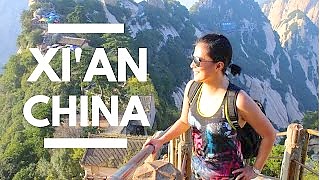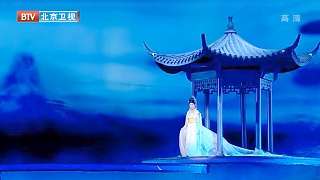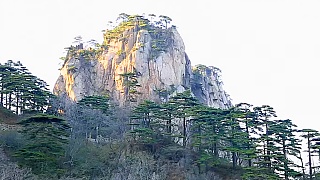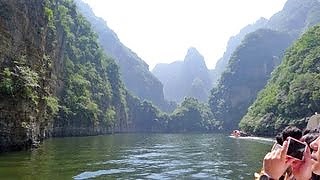
|
With Walk East ...
XiaSi Ancient Town visitor guide
Overview
XiaSi Ancient Town, located in GuiZhou province, is a charming and picturesque destination that offers a glimpse into China's rich cultural and historical heritage. Known for its well-preserved traditional architecture, winding streets, and vibrant local culture, XiaSi Ancient Town is a must-visit for those looking to explore the beauty and history of rural China.
History
XiaSi Ancient Town has a history that dates back over a thousand years. The town was an important commercial hub during the Ming and Qing dynasties, serving as a center for trade and cultural exchange. Many of the town's buildings and structures have been carefully preserved, allowing visitors to experience the architectural styles and cultural atmosphere of ancient China.
Main Attractions
Ancient Streets
The ancient streets of XiaSi are lined with well-preserved traditional buildings, shops, and residences. These narrow, winding streets offer a charming and authentic experience, transporting visitors back in time. The architecture reflects the unique styles of the Ming and Qing dynasties, with intricate wooden carvings, tiled roofs, and stone-paved pathways.
Traditional Residences
XiaSi Ancient Town is home to numerous traditional residences that showcase the local architectural styles and building techniques. Many of these homes have been converted into museums or guesthouses, allowing visitors to explore their interiors and learn more about the town's history and culture.
Local Temples
The town features several historic temples that are important cultural and religious sites. These temples are beautifully decorated with traditional artwork and serve as places of worship and community gatherings. Visitors can explore the temples, learn about local religious practices, and enjoy the serene and spiritual atmosphere.
Market Square
The market square is the heart of XiaSi Ancient Town, bustling with activity and vibrant with local life. Here, visitors can find a variety of traditional crafts, local delicacies, and handmade souvenirs. The market is an excellent place to experience the local culture and interact with the friendly residents.
Culture and Traditions
XiaSi Ancient Town is rich in cultural heritage, with a strong emphasis on preserving traditional customs and practices. The town is home to various ethnic groups, each contributing to the diverse cultural tapestry of the area. Visitors can witness traditional festivals, folk performances, and artisan crafts that reflect the unique cultural identity of the region.
Activities and Experiences
Walking Tours
Explore XiaSi Ancient Town on foot by joining a guided walking tour. These tours provide valuable insights into the town's history, architecture, and culture, and are led by knowledgeable local guides. Walking through the ancient streets is a delightful way to immerse yourself in the town's unique charm.
Shopping for Local Crafts
The town's market square and shops offer a variety of traditional crafts and handmade products. Visitors can shop for souvenirs, including pottery, textiles, and wooden carvings, all crafted by local artisans. These items make for unique and meaningful mementos of your visit.
Sampling Local Cuisine
XiaSi Ancient Town is known for its delicious local cuisine, which reflects the flavors and traditions of GuiZhou province. Visitors can sample a range of traditional dishes at the town's restaurants and food stalls. Don't miss trying the local specialties, such as spicy hotpot, pickled vegetables, and handmade noodles.
Participating in Festivals
Throughout the year, XiaSi Ancient Town hosts various traditional festivals that celebrate local culture and heritage. These festivals feature music, dance, and traditional performances, offering visitors a unique and immersive cultural experience. Check the local event calendar to see if any festivals coincide with your visit.
Accommodation
XiaSi Ancient Town offers a range of accommodation options, including traditional guesthouses, boutique hotels, and homestays. Staying in a traditional guesthouse or homestay provides an authentic experience and allows visitors to interact with local residents. These accommodations often feature traditional architecture and décor, adding to the charm of your stay.
Travel Tips
Best Time to Visit: The best time to visit XiaSi Ancient Town is during spring (March to May) and autumn (September to November) when the weather is pleasant and the town is less crowded.
Getting There: XiaSi Ancient Town is accessible by bus or car from GuiZhou's major cities. The nearest airport is GuiYang LongDongBao International Airport, which offers connections to various domestic and international destinations.
Opening Hours: The town is open to visitors year-round. Specific attractions and shops may have their own operating hours.
Entrance Fees: There may be entrance fees for certain attractions within the town. It is advisable to check the latest fees before planning your visit.
Dress Comfortably: Wear comfortable clothing and sturdy walking shoes, as the town's streets are cobbled and can be uneven.
Respect Local Customs: Be respectful of local customs and traditions, especially when visiting temples and cultural sites. Always ask for permission before taking photos of people.
Stay Hydrated: Carry water, especially if you plan on exploring the town extensively. It's also a good idea to bring snacks or purchase food from local vendors.
|
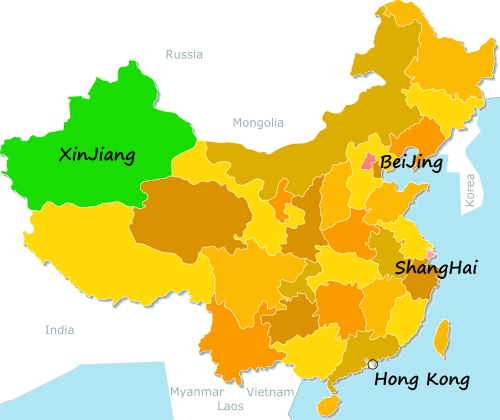
 Planning war with China – part 4
Planning war with China – part 4








![`US-sponsored separatist groups, backed by Washington for decades, are being mobilized to attack and undermine activities related to the BeiJing 2022 Olympics, starting with the torch relay in Greece. I explain the background of the “Free Tibet” movement and how the US government, through the CIA, backed it as early as the 1950s and transferred its operations to the National Endowment for Democracy (NED) [or `Dominion` / enslavement]. ` With The New Atlas . . . Bonus films - terror activities by US-backed `opposition` in Myanmar . . . Bonus film 2 - subverting the `left` . . . Bonus film 3 - on Ecuador . . . Bonus film 4 - on Cambodia . . . They say : `How dare you put your face in front of my fist ! Serve your master. Or else. ` More . . . On the US plan to nuke Chinese cities - as revealed by Daniel Ellsberg, famous for the `Pentagon Papers`, with NuMuves . . . On the Falun Gong cult . . . *** Planning war on China - part 11 - don't miss it ***](https://img.youtube.com/vi/2w31eNNcGVU/mqdefault.jpg)












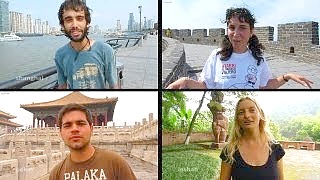

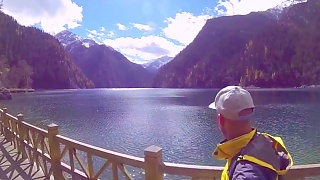
































![Planning War On China part 40 (the encore). From now, all similar content will be on the new Geopolitics page, so do check that out and bookmark. Something Different, health, and psychology videos are likely to also move to their own pages. So we will still cover all these aspects of life, but have more time to focus on Chinese culture and China travel. *************************** Official racism is a very important fact to consider, and because it is is based on propaganda, can be easily missed for what it really is. Yet once seen, it is all so clear. Us and Them - is the sales pitch of supremacists and bomb companies. That is ALL it is. There is no `us and them`; that is just a scam to fool you into obedience / subservience / enslavement. The real schism is that there are real / open-eyed people, and then there are the brainwashed / believers people. Simple as that. Puppets at the top; puppets at the bottom. One life, one world, one family. One has love, or one does not. Real love doesn`t have targets; real love is a light that shines in all directions. Onto the video film . . . With George Galloway in conversation with Jerry`s Take on China . . . Bonus films . . . George at his very best - don`t miss it . . . What is more important - life or money (power) ? Simply believe ? Or be free to see reality ?? No longer puppet. Live more . . . Because it is not about `me` (that is the scam / fantasy, and a big topic in itself - `your problems are all your fault`, is part of it); it is really about `WE`. In China, the people are family. In the West, the people are livestock. And that is the `threat`. [ video v=fIxPv2Dn_P0 ] Oliver Stone interviews Vladimir Putin . . . Taiwan the next Ukraine ? . . . Lee Camp . . . [ video v=OSkpIq3T-Zc ] Racism is racism is racism. There is NO excuse, no matter how `official` it is sold to you. Something like 3 million died in the Vietnam war (not including the carpet bombing of Laos and Cambodia), alone. This is what racism entails. How many times will this lie play out ? Meanwhile . . . Peace. Official racism. Reality is so very different from the 'official' / MSM narrative / fairy tale - DON'T MISS THIS !](https://img.youtube.com/vi/Kc7f4JKhwtk/mqdefault.jpg)

























